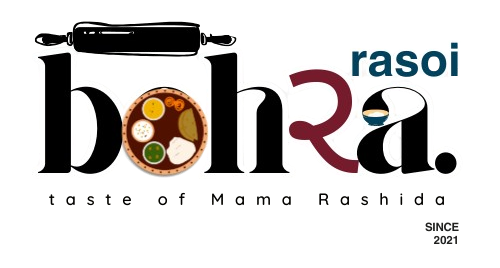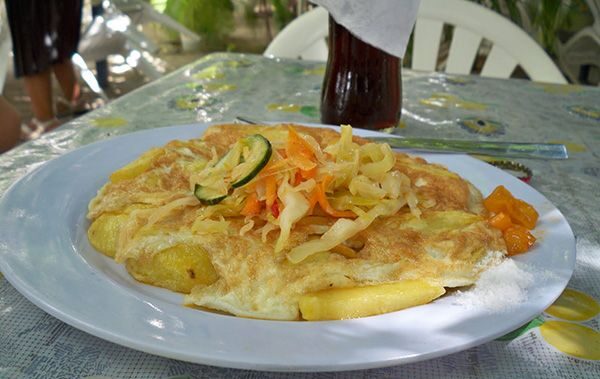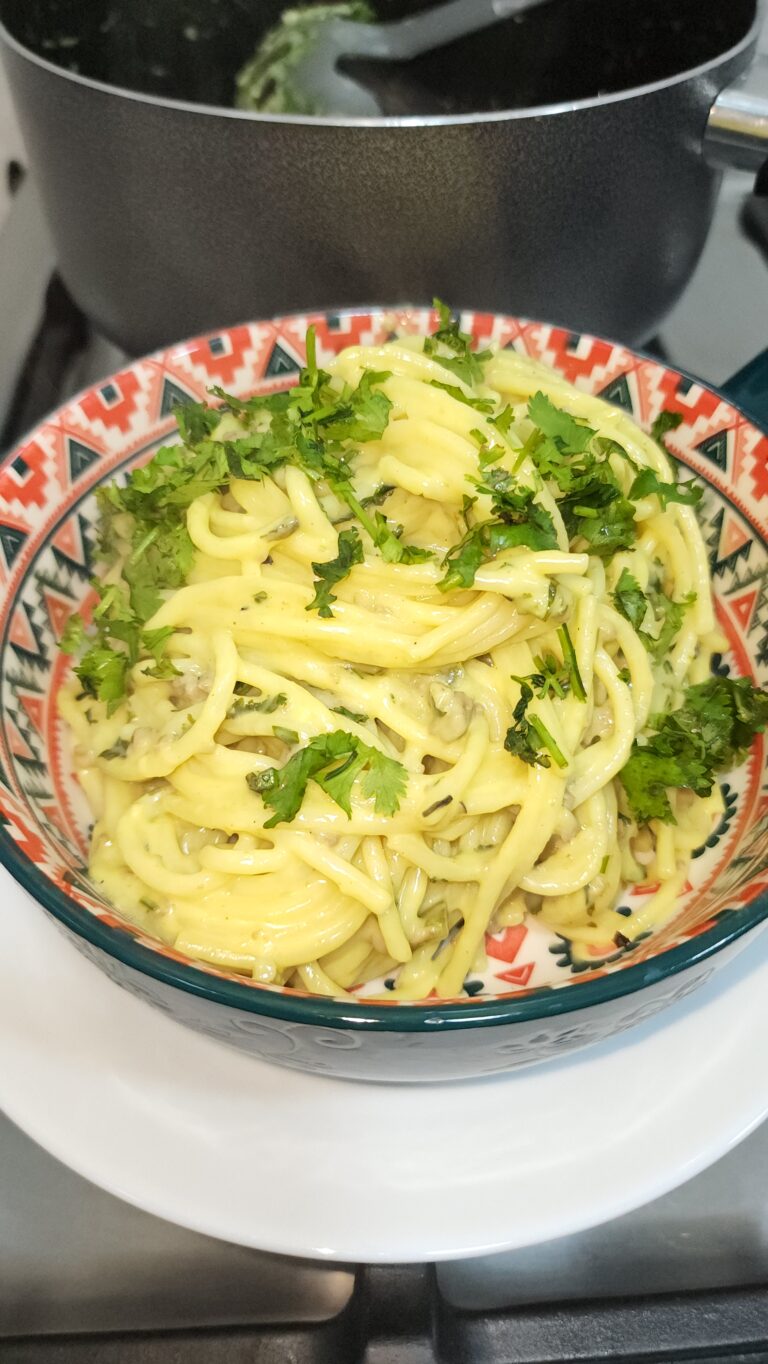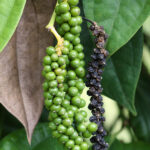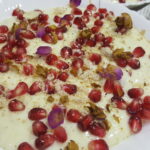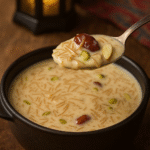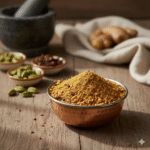The Best Fluffy Pancakes recipe you will fall in love with. Full of tips and tricks to help you make the best pancakes.
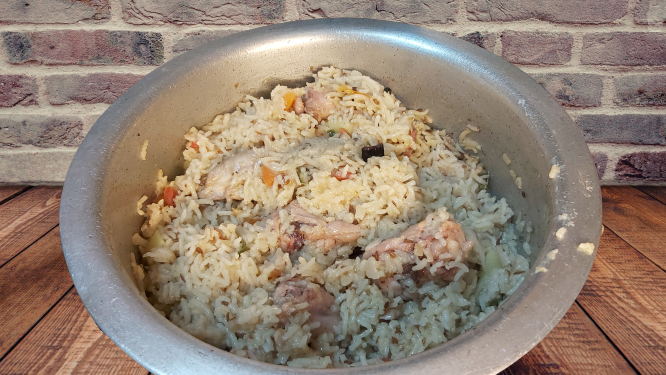
In many Dawoodi Bohra homes, Friday lunch carries a special significance. It is a time when families gather, pause from the week’s hustle, and share a comforting meal before Jummah prayers. In our home, this tradition was beautifully kept alive by my mother. Every Friday, my father would come home from work in the afternoon, expecting a warm, hearty dish — and my mother never failed to deliver.
On some Fridays, it would be pilau or plain chawal with gosht nu saag. Other times, kuku paka with chapati would grace our thaals. But more often than not, the dish that brought everyone together was Chicken Akhni, a flavourful one-pot rice dish, rich in aroma and steeped in memories.
I remember my mother standing over a large vessel, cooking more than what our family of five could finish. She had this beautiful habit of sending portions to our family friends and the elderly women who lived alone. It wasn’t just food – it was her way of keeping bonds alive, of sharing comfort, of ensuring no one felt left out. Today, whenever I cook Akhni, I am reminded of that generosity, the fragrance of spices filling our house, and the comfort of sitting together as a family.
Unlike other dishes, Chicken Akhni had this wonderful ability to taste both festive and homely. Every bite carried the fragrance of pilau spices, tender chicken, and fluffy rice – simple yet soulful. And though recipes can differ across families, the heart of Akhni remains the same: a halal, wholesome, community-centred meal.
What is Chicken Akhni?
Akhni is a spiced rice dish, very similar to pilau, but often cooked with a more generous use of onions, whole spices, and marinated chicken or mutton. Some also add yoghurt during marination, but my mum never used yoghurt when making akhni/pilau, as her recipe was more of an East African style Bohra Pilau. Unlike biryani, it is less elaborate but equally comforting. For the Bohras, Akhni is not just food — it is an expression of togetherness and tradition, especially on Fridays.
The Importance of Ingredients
What makes Chicken Akhni special is not just the recipe but also the choice of ingredients. Each family has their own way of selecting what goes into it, and these choices often carry cultural and regional identity. The beauty of Akhni lies in its ingredients — simple yet powerful in creating flavour and memory.
1. Chicken
- Traditionally, my mother preferred fresh farm chicken from the local butcher.
- If you’re cooking today, you can use:
- Broiler Chicken – Commonly used, cooks quickly, absorbs masala well.
- Free-range chicken (more flavourful, slightly firmer meat)
- Desi Chicken (Country Chicken) – A traditional favourite, with firmer meat and richer flavour, though it requires longer cooking.
- Skin-on vs Skinless – Skinless is lighter and widely preferred in Bohra homes, while skin-on adds depth and richness.
Chicken Cuts
- Whole Chicken (cut into 8 pieces): The most traditional choice – gives both dark and white meat, balancing flavour.
- Chicken Thighs/Legs: Juicier and more flavourful, perfect for those who love tender meat.
- Chicken Breast: A leaner option, though it can dry out if overcooked – best used with extra ghee.
- Halal-certified chicken is essential – in Bohra tradition, every ingredient we cook with is 100% halal. It’s not just dietary law; it’s tied to our sense of purity and respect for food.
- The choice of chicken truly defines the depth of flavour. Free-range or desi adds authenticity, while broiler works best if you’re short on time.
Tip: If you want a truly Bohra-style Akhni, choose chicken that is fresh and halal-certified, as purity and quality play a vital role in our kitchen traditions.
2. Rice Varieties
Rice is at the heart of Akhni, and interestingly, each family has their own favourite. The choice of rice changes the character of Akhni completely, defines the final aroma and texture of Akhni:
- Kenyan Pishori Rice – My mother’s favourite. Known for its delicate fragrance, lightness, and ability to stay fluffy even after cooking made the Akhni melt in your mouth.
- Mbeya Rice – My aunt in Dar es Salaam swore by this. Slightly stickier, heartier, and perfect for soaking up masala with a firmer bite.
- Basmati Rice – the go-to for Bohras in India, known for its Long-grain, aromatic, slender grains that stay separate, giving Akhni a pilau-like elegance and elegant on the thaal.
- Tips: Always wash and soak your rice for 20–30 minutes before cooking. This ensures the grains remain separate and fluffy.
Each grain tells a story. For me, Pishori rice means the comfort of home, Mbeya rice reminds me of extended family in East Africa, and Basmati brings back memories of Bohra thaals in India. Whether you’re in Kenya, Tanzania, or India, the type of rice you use brings a unique identity to your Akhni.
3. Spices & Herbs
The soul of Akhni lies in its spice blend. My mother’s hand-measured balance of whole spices and ground masalas created that perfect aroma. Cinnamon, cloves, black pepper, cumin, cardamom, and bay leaves would always go into the tempering — filling the house with fragrance before the rice even touched the pot.
🥔 Vegetables
- Potatoes are almost non-negotiable in East African Bohra homes – they soak up the spices beautifully.
- Carrots are optional but add colour and slight sweetness.
🧈 Fat for Cooking
- Ghee is traditional – it enhances aroma and gives richness.
- Oil can be used as a lighter alternative, but you’ll miss out on that soulful depth.
Why These Ingredients Matter
Every ingredient in Akhni carries meaning beyond taste:
- Chicken brings the heartiness of protein while staying lighter than beef or mutton.
- Rice connects us to our roots — whether it was Pishori from Kenya, Mbeya from Tanzania, or Basmati from India. Each grain carried a piece of our heritage.
- Spices tie us to tradition, passed down through generations, unchanged and unmeasured — always “by instinct” in my mother’s cooking.
Bohra Chicken Akhni Recipe
Course: Rice, Main CourseCuisine: Bohra, SwahiliDifficulty: Medium4
servings30
minutes40
minutes300
kcal30
minutes1
hour40
minutesFragrant Chicken Bohra Akhni (Pilau) – tender chicken cooked with aromatic spices and basmati rice, a classic Bohra main course for special occasions.
Ingredients
- Marination:
* ½ chicken, skinned and cut into 8 pieces
* 1 tbsp ginger garlic paste
* Salt to taste
* ½ tsp black pepper powder
- Akhni:
* 4 tbsp ghee
* 2 tbsp whole pilau spices (whole cumin, black peppercorns, cinnamon sticks, cloves, cardamom)
* 2-3 chopped green chilies
* 1 diced carrot (optional)
* 2 large potatoes, cubed
* 1 onion, chopped
* 1 tomato, chopped
* 2 small cups of rice (small Nestle cream tins)
Directions
- Marinate the Chicken
- Start by marinating the chicken. In a bowl, combine the chicken pieces with ginger garlic paste, salt, and black pepper powder. Mix well, ensuring each piece is evenly coated. Allow it to marinate for at least 30 minutes, letting the flavors meld together.
- Prepping Ingredients
- While the chicken marinates, wash the rice thoroughly and prepare all the remaining ingredients. This includes chopping onions, slicing green chilies, and cubing the potatoes.
- Cooking the Chicken Akhni
- Heat 4 tablespoons of ghee in a large pan. Add the whole pilau spices, including cumin, black peppercorns, cinnamon sticks, cloves, and cardamom. Let them sizzle and release their aromatic flavors.
- If you prefer a slightly spicier dish, add the chopped green chilies. Sauté them briefly until fragrant.
- Stir in the chopped onion and cook until it turns a beautiful golden brown.
- Add the chopped tomato, and continue cooking until it softens and blends seamlessly with the spices.
- Now, add the marinated chicken, carrots (if using), and cubed potatoes. Mix well, ensuring the chicken turns white on all sides.
- Gently add the washed rice to the pan. Stir it into the other ingredients, allowing it to soak up the delightful flavors.
- Pour in enough water to fully submerge the rice. Typically, you’ll need approximately twice the volume of water as there is rice. For precise measurements, you can use the ratio of 1 cup of rice to 2 cups of water.
- 10. Cover the pan and let it simmer until the chicken is fully cooked, the rice is tender, and the flavors have melded together. This usually takes around 30-40 minutes.
Recipe Video
Notes
Serving Suggestions: Once the Chicken Akhni is ready, serve it piping hot. It pairs wonderfully with Bohra Khurdi (milk mutton soup), Kachumbari, and Pili Pili ya Kukaanga for an authentic Bohra-style feast.
Serving Suggestions
No Bohra meal is complete without accompaniments. Pair Akhni with:
- Khurdi (milk-mutton soup) – a soothing balance
- Kachumbari (tomato-onion salad) – adds crunch and freshness
- Pili Pili ya Kukaanga (Kenyan chilli chutney) – for spice lovers
- Plain yoghurt or raita – cooling and simple
🥘 Kitchen Tips
- Make ahead: Cook early in the morning; keep warm in a low oven for lunchtime.
- Reheating: Sprinkle water over rice before reheating to restore softness.
- Storage: Lasts 2–3 days in the fridge, freezes well up to 2 weeks. (Though I wouldn’t suggest freezing any rice dishes)
Pro Tips
- Use ghee for the authentic aroma.
- Always soak rice for 20 minutes – helps grains cook evenly.
- Marinate chicken overnight if you can – deeper flavour.
- Add fried onions (birista) for a richer taste.
- Don’t stir rice too much after adding water – prevents breaking.
- A heavy-bottomed pot prevents burning.
- Let the Akhni rest before serving – flavours settle beautifully.
- For gatherings, double the recipe – it reheats well.
Family Memories Around Akhni
The beauty of this dish was not only in its taste but also in its rituals. My mother’s Akhni was always made in generous portions. She had this selfless habit of sending a share to family friends and women who lived alone, ensuring no one felt left out on a Friday. It turned a simple meal into a gesture of love, community, and remembrance.
At our table, Akhni carried laughter, stories, and togetherness. My father especially cherished these meals, enjoying them with the joy of coming home early to a family feast.
Chicken Akhni Bohra Style is more than just a rice dish — it’s an heirloom recipe that speaks of family, kindness, and cultural identity. Every Friday, it transformed our home into a space of togetherness and generosity.
If you decide to try it, use the rice and chicken that feel closest to your own roots, and cook it with love. After all, that’s what makes Akhni truly special.
📩 I would love to see your recreations! Share your Chicken Akhni with me at business@bohrarasoi.com or tag me on Instagram @eastafrican.foodie and @bohrarasoi. Let’s keep our Bohra culinary heritage alive together.
